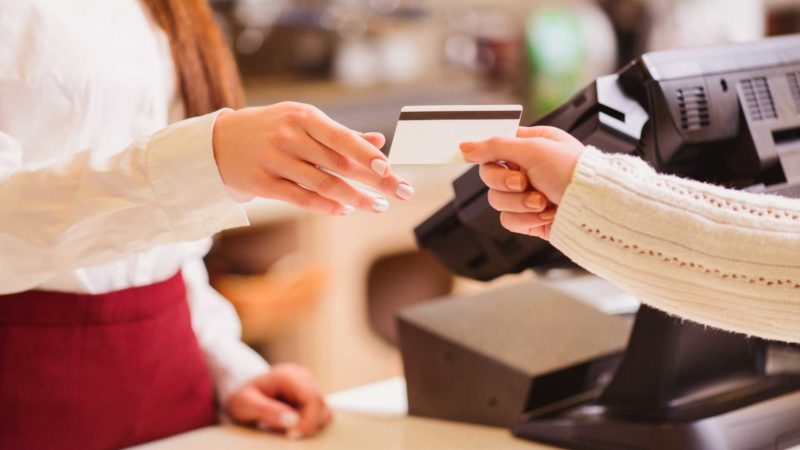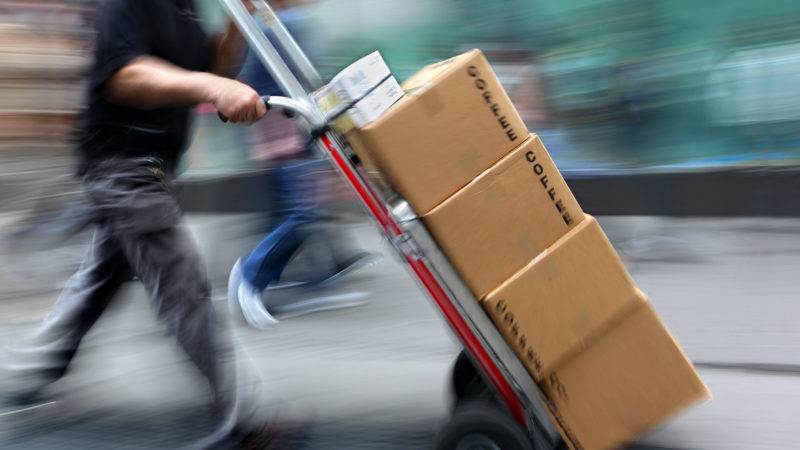Consumers don’t want to think anymore
Contributor Evan Magliocca outlines three key areas where consumer expectations of retail are evolving rapidly.

Expectations are moving so quickly that they’re outpacing the same technologies that are keeping retailers on their toes. At the customer’s core, he or she simply doesn’t want to think anymore. The customer doesn’t want to worry about slow load times, clunky payment experiences, shipping and long lines. The customer only wants to think about the product — and he or she wants it immediately without distractions.
No industry is immune to these changing dynamics. While retail has seen the most change from every angle of the business model, grocery stores are experiencing urgency around payments, mobile checkout and scan-and-go technology. The banking and finance space is also playing catch-up from poor customer experiences and easy payment transfer options that Venmo has pushed into the customer mindset.
But retail always seems to take these changes the hardest. It’s constantly taking hits from point-of-sale experiences, streamlined payments, automated reorders, machine-learning logistics and now, even voice ordering.
So let’s focus on a few of the more influential areas that are affecting customer expectations.
Evolution of point-of-sale (POS)
Customers don’t want to wait in lines. In fact, they don’t even want to check out anymore. They want to get their products quickly and walk out.
The grocery industry is one of the worst offenders. Let’s be honest: Grocery shopping can be a bad experience, and the majority of those issues arise at checkout, with long lines and irritated customers. Self-checkout stands have helped alleviate some of those issues, but it’s still clunky and sometimes causes more pain than going to a cashier. Online ordering paired with store pickup is another solution that’s gaining steam.
As with most changes, Amazon is pulling the rest of the industry along with its Amazon Go stores, an experiment with the scan-and-go model to move customers through checkout quickly and efficiently. But Amazon Go stores aren’t national fixtures yet.
Customers who don’t have that option are expecting big changes to their grocery stores, and the current model that hasn’t evolved in decades quickly becomes a bigger frustration at larger chains. Kroger is feeling the heat, and it’s a positive move to see them evolving their checkout options to include the Scan, Bag, Go option. Expect retail to follow their lead. As store traffic continues its precipitous decline, retailers will risk big on new technologies to bring customers back.
Macy’s is already banking on this new technology to bring traffic back to stores. The problem is that the brand executed the technology in the most “Macy’s” way possible. After scanning, customers are still required to go to a special line where associates will check them out and remove security tags — essentially undoing all of the benefits of the technology.
Even so, it’s a step in the right direction, and other retailers will follow suit, hopefully with a cleaner experience.
Shipping & delivery
First things first. There are still retailers that don’t offer forms of free shipping. Their finance teams are addicted to the revenue stream from shipping, and they won’t give it up, even though the bigger picture shows that it clearly hurts sales. Most retailers have an evergreen shipping threshold (at the very least), and others, such as Walmart and Amazon, offer free expedited shipping, putting them in in a space-race style battle to be the king of logistics.
Free shipping is low-hanging fruit. If retailers don’t offer it, they’re already doomed. Customers are expecting not just free delivery, but also lightning-fast shipping. Logistics is no longer a backroom problem; it’s a major facet of the customer experience, and it’s integral to keeping up with customers’ expectations of immediate gratification.
We often talk about machine learning and AI in purely marketing terms, and it has its uses there, but the biggest impact machine learning can have is in logistics, with predictive deliveries and predictive product models for distribution centers.
Those components are paramount for aligning to customers and keeping up with Amazon and Walmart, which can outmuscle other retailers with their massive distribution networks.
Post-purchase experience
Shipping a product isn’t the end goal for brands anymore, and this is one area that is beneficial. The experience doesn’t end; it simply takes a new path to get customers back into the consideration set.
Customers expect a couple of key elements. First is a post-purchase email to confirm that they like a product and to see if they have experienced any issues. That’s just good business, and it also offers brands the opportunity to increase purchase frequency by targeting recently purchased products. Active customers are most likely to purchase again within 30 to 60 days of their most recent purchase, so giving recent buyers a lifecycle email is not only expected by customers but is also highly lucrative for the brand.
Another customer expectation is the ability to be heard by the brand. They believe in the voice of the customer (VOC). Customers want to provide their opinions through ratings and reviews, social engagement and surveys. Brands need to appreciate that this voice is out of their control — the customers own it. Again, this is a benefit to the brand because it increases engagement, and customers who interact with the brand are more likely to be repeat purchasers.
Think like your customer
As marketers, strategists and analysts, we often get sucked so deep into the brand framework that we forget to think like a customer. Yet we’re all part of that same cycle. Sometimes the easiest solution is just to realize what you’d want if you were shopping.
Some of the most important changes to the customer journey are — at their core — the simplest of ideas. And that evolution isn’t stopping, it’s accelerating. Soon customers will expect automated reorders to be available with accurate and efficient voice-controlled purchases.
If retailers and grocers remember to put themselves in the shoes of a spoiled customer every now and then, they can keep customers happy and provide experiences that are mutually beneficial.
Opinions expressed in this article are those of the guest author and not necessarily MarTech. Staff authors are listed here.
Related stories
New on MarTech

